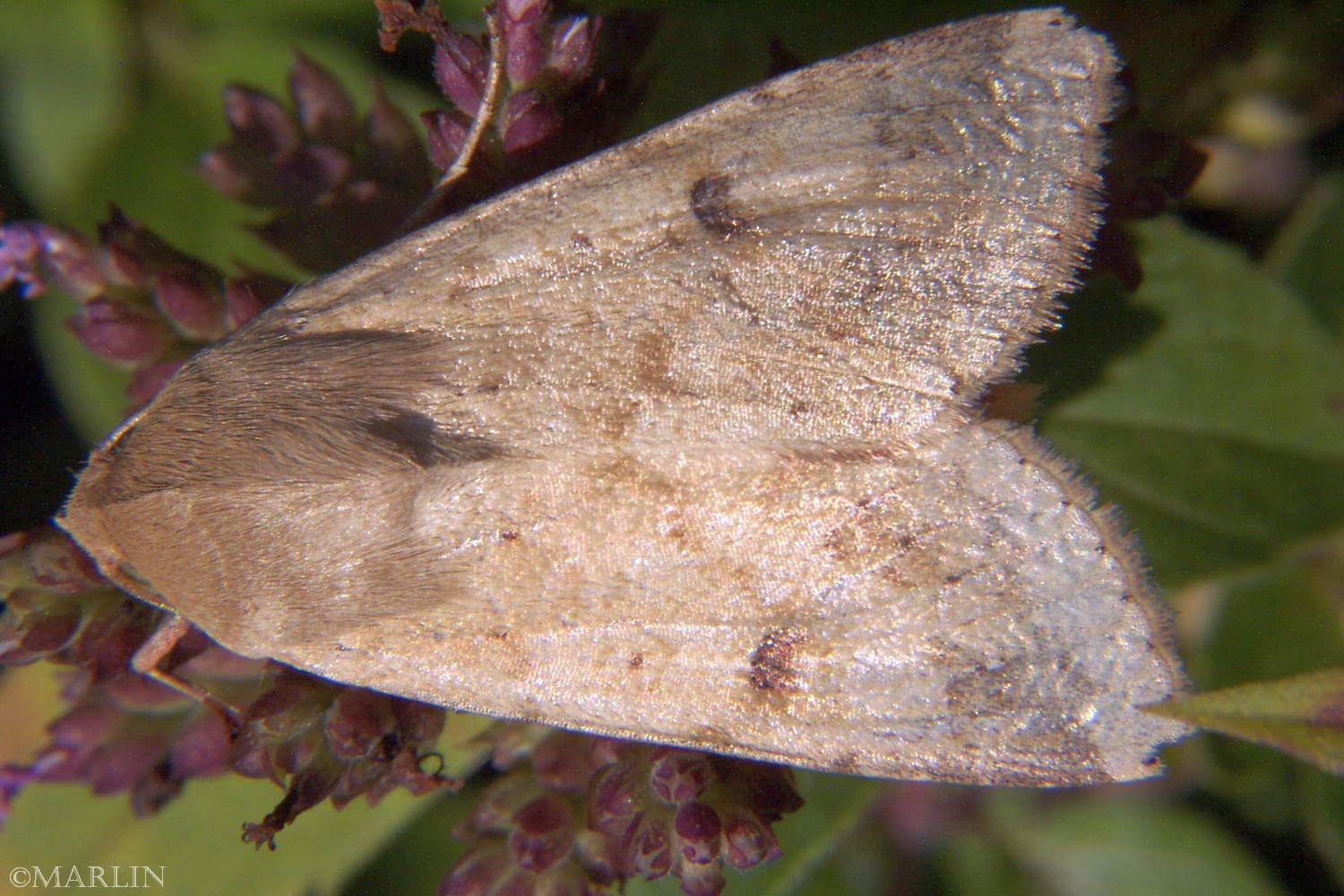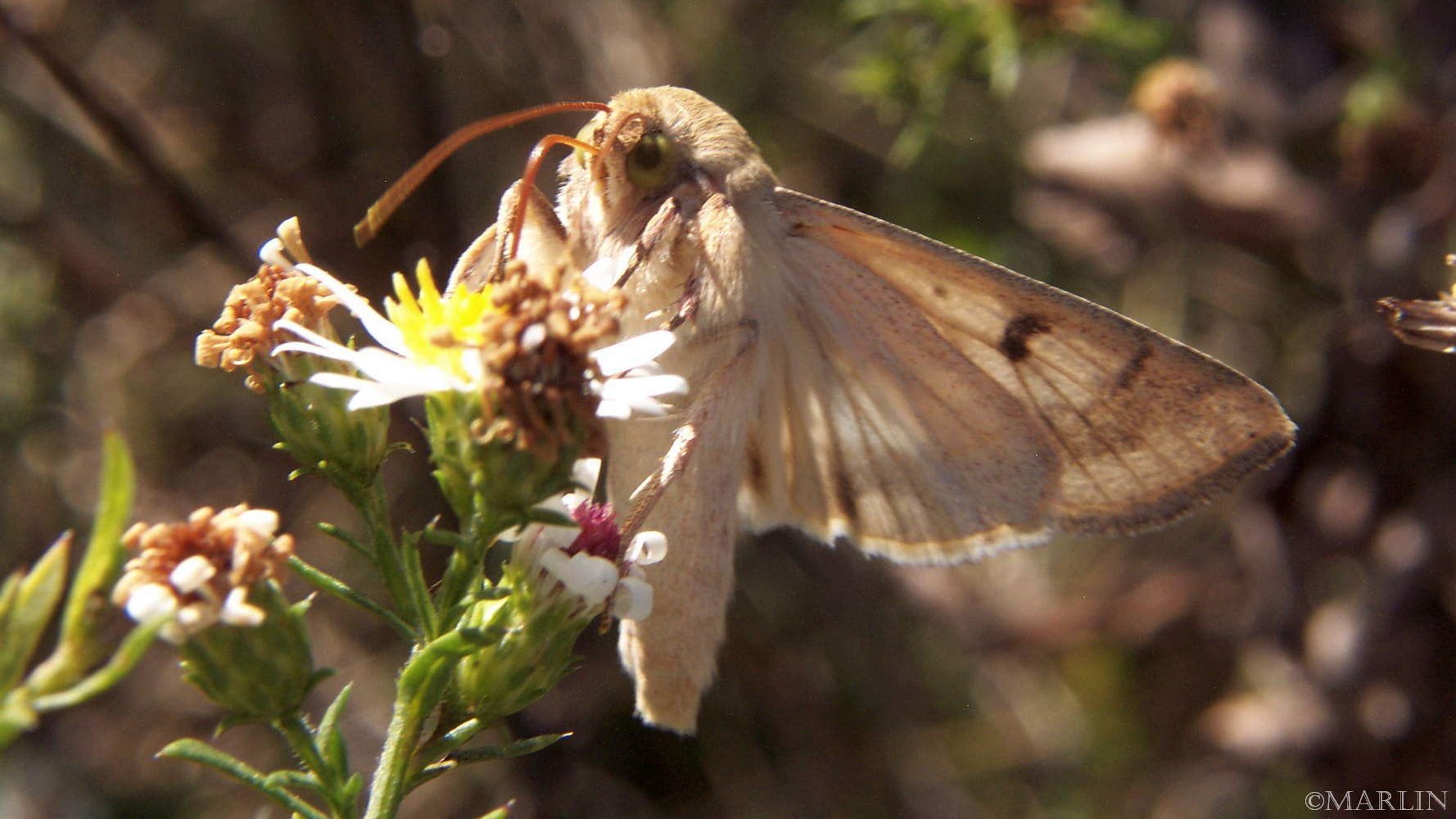Corn Earworm Moth – Heliothis zea

Family: Noctuidae. Larvae are variously known as as corn earworm, cotton bollworm or tomato fruitworm. Live adult moths photographed at Winfield, Illinois
Corn earworm is found throughout North America except for northern Canada and Alaska. In the eastern United States, corn earworm does not normally overwinter successfully in the northern states. It is known to survive as far north as about 40 degrees north latitude, or about Kansas, Ohio, Virginia, and southern New Jersey, depending on the severity of winter weather. However, it is highly dispersive, and routinely spreads from southern states into northern states andCanada. Thus, areas have overwintering, both overwintering and immigrant, or immigrant populations, depending on location and weather. In the relatively mild Pacific Northwest, corn earworm can overwinter at least as far north as southern Washington.
This species is active throughout the year in tropical and subtropical climates, but becomes progressively more restricted to the summer months with increasing latitude. In northeastern states dispersing adults may arrive as early as May or as late as August due to the vagaries associated with weather; thus, theirpopulation biology is variable. The number of generations is usually reported to be one in northern areas such as most of Canada, Minnesota, and western New York; two in northeastern states; two to three in Maryland; three in the central Great Plains; and northern California; four to five in Louisiana and southern California; and perhaps seven in southern Florida and southern Texas. The life cycle can be completed in about 30 days.
“As with the larval stage, adults are quite variable in color. The forewings of the moths usually are yellowish brown in color, and often bear a small dark spot centrally. The small dark spot is especially distinct when viewed from below. The forewing also may bear a broad dark transverse band distally, but the margin of the wing is not darkened. The hind wings are creamy white basally and blackish distally, and usually bear a small dark spot centrally. The moth measures 32 to 45 mm in wingspan. Adults are reported to live for five to 15 days, but may survive for over 30 days under optimal conditions.
The moths are principally nocturnal, and remain active throughout the dark period. During the daylight hours they usually hide in vegetation, but sometimes can be seen feeding on nectar. Oviposition commences about three days after emergence, continuing until death. Fresh-silking corn is highly attractive for oviposition but even ears with dry silk will receive eggs. Fecundity varies from about 500 to 3000 eggs, although feeding is a prerequisite for high levels of egg production. Females may deposit up to 35 eggs per day.
Corn earworm has a wide host range; hence, it is also known as “tomato fruitworm,” “sorghum headworm,” “vetchworm,” and “cotton bollworm.” In addition to corn and tomato, perhaps its most favored vegetable hosts, corn earworm also attacks artichoke, asparagus, cabbage, cantaloupe, collard, cowpea, cucumber, eggplant, lettuce, lima bean, melon, okra, pea, pepper, potato, pumpkin, snap bean, spinach, squash, sweet potato, and watermelon. Not all are good hosts, however. Harding (1976a), for example, studied relative suitability of crops and weeds in Texas, and reported that although corn and lettuce were excellent larval hosts, tomato was merely a good host, and broccoli and cantaloupe were poor. Other crops injured by corn earworm include alfalfa, clover, cotton, flax, oat, millet, rice, sorghum, soybean, sugarcane, sunflower, tobacco, vetch, and wheat. Among field crops, sorghum is particularly favored. Cotton is frequently reported to be injured, but this generally occurs only after more preferred crops have matured.
Fruit and ornamental plants may be attacked, including ripening avocado, grape, peaches, pear, plum, raspberry, strawberry, carnation, geranium, gladiolus, nasturtium, rose, snapdragon, and zinnia. In studies conducted in Florida, Martin et al. (1976a) found corn earworm larvae on all 17 vegetable and field crops studied, but corn and sorghum were most favored. In cage tests earworm moths preferred to oviposit on tomato over a selection of several other vegetables that did not include corn.
Such weeds as common mallow, crown vetch, fall panicum, hemp, horsenettle, lambsquarters, lupine, morningglory, pigweed, prickly sida, purslane, ragweed, Spanish needles, sunflower, toadflax, and velvetleaf, have been reported to serve as larval. However, Harding (1976a) rated only sunflower as a good weed host relative to 10 other species in a study conducted in Texas. Stadelbacher (1981) indicated that crimson clover and winter vetch, which may be both crops and weeds, were important early season hosts in Mississippi. He also indicated that cranesbill species were particularly important weed hosts in this area. In North Carolina, especially important wild hosts were toadflax and deergrass (Neunzig 1963).
Adults collect nectar or other plant exudates from a large number of plants. Trees and shrub species are especially frequented. Among the hosts are Citrus, Salix, Pithecellobium, Quercus, Betula, Prunus, Pyrus and other trees, but also alfalfa; red and white clover; milkweed, and Joe- Pye weed and other flowering plants. “
– Used with permission ©University of Florida, Institute of Food and Agricultural Sciences Document EENY-145, published July 2000.
Order Lepidoptera: Moths. Unlike the butterflies, moths are usually nocturnal. Many moths and their caterpillars are major agricultural pests in large parts of the world. Moths in the family Tineidae are commonly regarded as pests because their larvae eat fabrics, clothes and blankets made from natural fibers such as wool or silk. Moths in the genus Farinalis feed on stored grain, flour, corn meal and other milled grain products.
Butterflies Main | Moths | Moths Index | Butterflies Index

